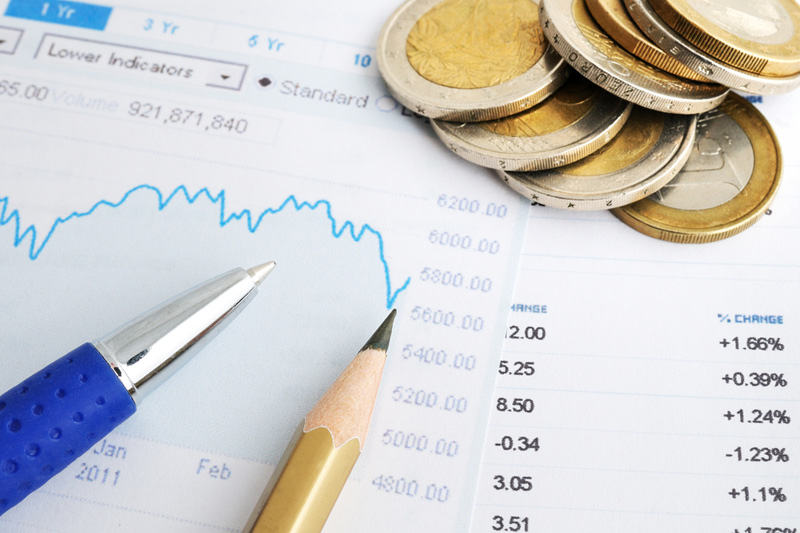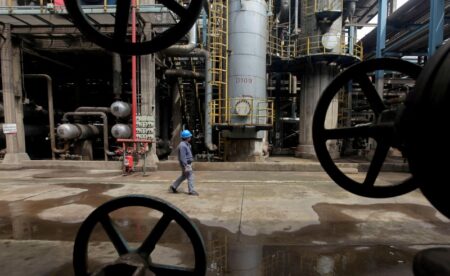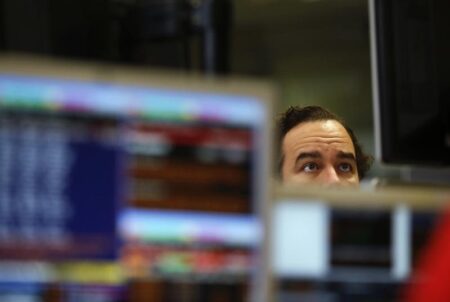By Koh Gui Qing and Tom Wilson
NEW YORK/LONDON (Reuters) -The dollar fell while stocks eked out slim gains on Monday as investors treaded carefully before the U.S. presidential election that will impact the world economy, with a U.S. Federal Reserve interest rate cut also expected later in the week.
In the U.S. presidential race, Democratic candidate Kamala Harris and Republican candidate Donald Trump remain virtually tied in opinion polls ahead of Tuesday’s vote. It might not be clear who has won for days after voting ends.
Trump’s policies on immigration, tax cuts and tariffs may put upward pressure on inflation, bond yields and the dollar, analysts believe, while Harris is seen as the continuity candidate.
“We are too evenly divided and polarized to suggest a red sweep,” Frank Luntz, Republican consultant and pollster, told the Reuters Global Markets Forum. “The Senate looks like it will swing Republican, but the presidency and the house are simply too close to call,” Luntz said.
MSCI’s gauge of stocks across the globe added 0.3%, while the , which measures the greenback against a basket of currencies, eased 0.29% to 103.63.
The dollar slid against a host of European and Asian currencies, losing 0.76% against the euro to $1.090, and falling 0.7% against the Japanese yen to 151.90. [USD/]
The U.S. Treasury market, which has priced for a Trump victory in the past month that sent yields shooting higher, saw traders square positions on Monday after a poll showed Harris with a surprise lead in Iowa. [US/]
U.S. Treasury yields fell across the board. The yield on the benchmark U.S. 10-year note fell 9 basis points (bps) to 4.28%, on track for its largest daily fall since late August.
The U.S. two-year Treasury yield fell for the first time in six days, down 6.8bps at 4.135% and on pace for its biggest one-day decline in two months.
European stocks were flat, with energy stocks among top gainers as a decision by OPEC+ to delay plans to increase output pushed up oil prices.
British stocks outperformed continental indexes to add 0.4%, helped by the energy sector.
“Tomorrow will shape the direction of the world economy and geopolitics for the next four years,” Deutsche Bank analysts wrote.
They cautioned that “there remains a large degree of uncertainty around both the result, including the very tight House (of Representatives) race, and when we will know it.”
RATES FOCUS
The week will also provide investors with global monetary policy catalysts. The most closely watched of a slew of rate decisions is the Fed, while decisions are also due from the Bank of England (BoE), the Reserve Bank of Australia (RBA), Sweden’s Riksbank and Norway’s Norges Bank.
Markets are leaning towards a 25-basis-point Fed rate cut.
“Based on current data, we see no reason for (the FOMC) to rush through rate cuts,” said analysts at ANZ.
“The election and uncertainty over the future fiscal path also support arguments for caution in recalibrating monetary policy.”
Earlier, MSCI’s broadest index of Asia-Pacific shares outside Japan rose 0.7%, recovering from its fall to a five-week low on Friday.
This week’s meeting of China’s powerful National People’s Congress (NPC) standing committee is at the top of investors’ radar.
The NPC meets from Nov. 4 to Nov. 8, and any further details on a raft of recently announced stimulus measures are in focus.
Chinese blue-chip stocks gained 1.4%, with the up 1.2%.
Reuters reported that at the NPC meeting China is considering approving the issuance of more than 10 trillion yuan ($1.4 trillion) in extra debt in the next few years to revive its fragile economy, a fiscal package which is expected to be further bolstered if Trump wins the election.
The Bank of England, which meets on Thursday, is similarly expected to ease rates by 25 bps. Its decision has been complicated by a sell-off in gilts following the Labour government’s budget last week.
Sterling nudged 0.5% higher to $1.298, helped by a weaker dollar. It fell 0.3% last week.
Oil prices rose after OPEC+ said on Sunday it would delay a planned December output hike by one month. futures rose 2% to $74.6. U.S. West Texas Intermediate (WTI) crude added 2.2% to $71.01. [O/R]
Read the full article here
















